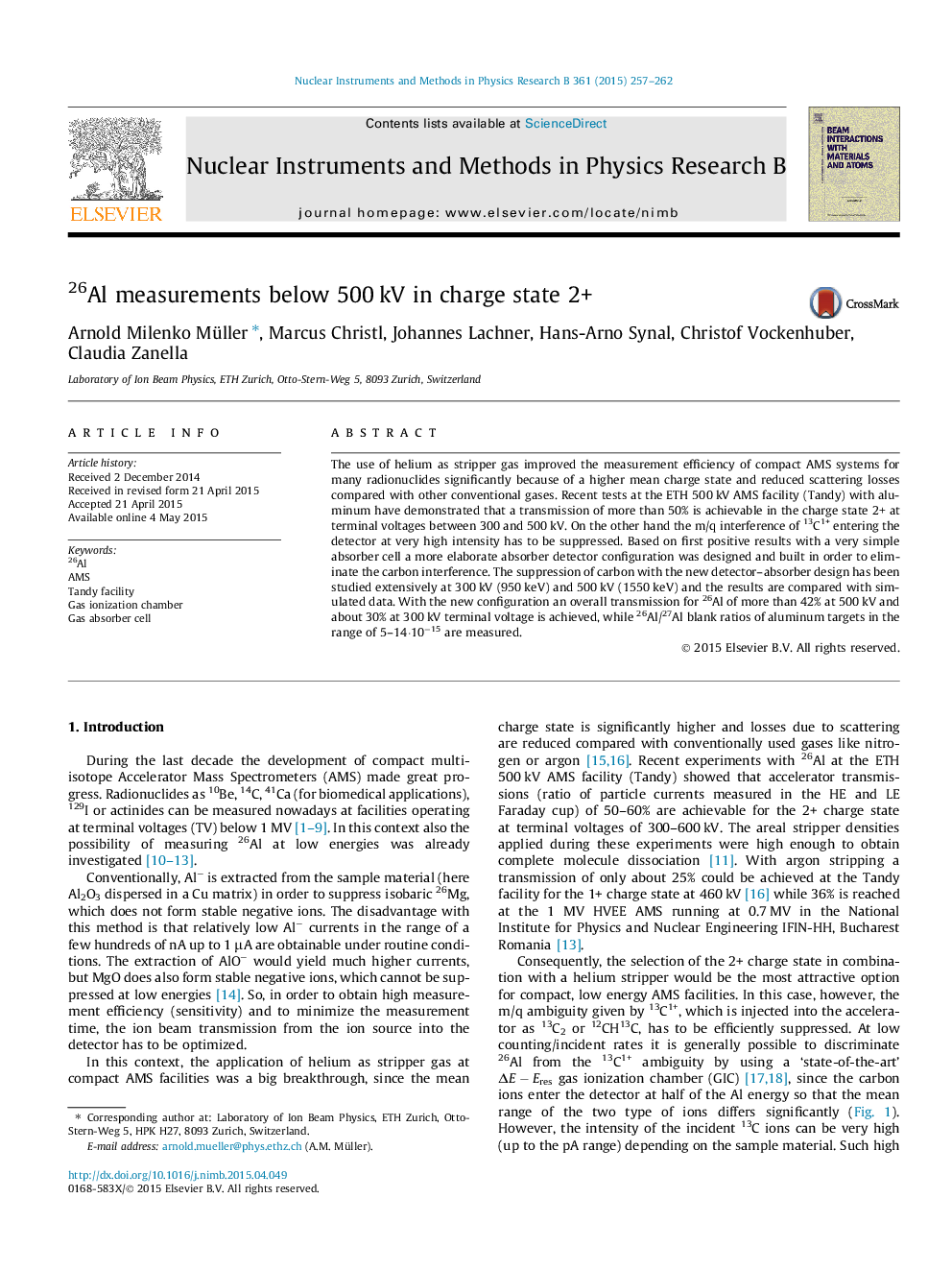| Article ID | Journal | Published Year | Pages | File Type |
|---|---|---|---|---|
| 8040363 | Nuclear Instruments and Methods in Physics Research Section B: Beam Interactions with Materials and Atoms | 2015 | 6 Pages |
Abstract
The use of helium as stripper gas improved the measurement efficiency of compact AMS systems for many radionuclides significantly because of a higher mean charge state and reduced scattering losses compared with other conventional gases. Recent tests at the ETH 500 kV AMS facility (Tandy) with aluminum have demonstrated that a transmission of more than 50% is achievable in the charge state 2+ at terminal voltages between 300 and 500 kV. On the other hand the m/q interference of 13C1+ entering the detector at very high intensity has to be suppressed. Based on first positive results with a very simple absorber cell a more elaborate absorber detector configuration was designed and built in order to eliminate the carbon interference. The suppression of carbon with the new detector-absorber design has been studied extensively at 300 kV (950 keV) and 500 kV (1550 keV) and the results are compared with simulated data. With the new configuration an overall transmission for 26Al of more than 42% at 500 kV and about 30% at 300 kV terminal voltage is achieved, while 26Al/27Al blank ratios of aluminum targets in the range of 5-14·10â15 are measured.
Keywords
Related Topics
Physical Sciences and Engineering
Materials Science
Surfaces, Coatings and Films
Authors
Arnold Milenko Müller, Marcus Christl, Johannes Lachner, Hans-Arno Synal, Christof Vockenhuber, Claudia Zanella,
